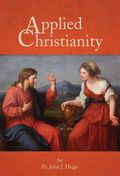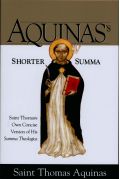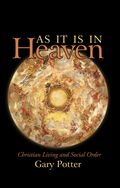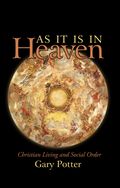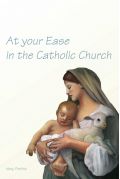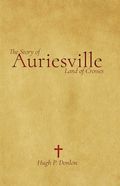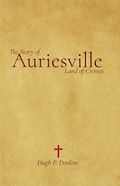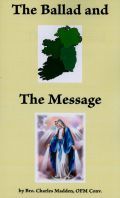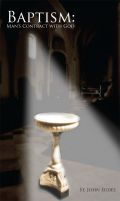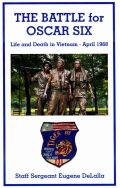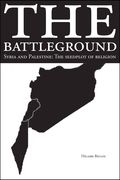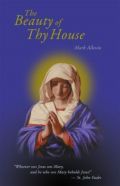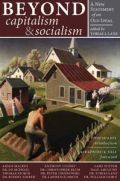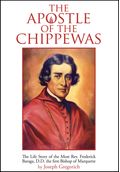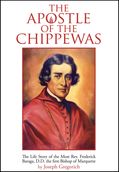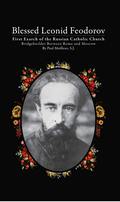Categories
Information
All Products
Father John J. Hugo - PB - 330 pages
This is the second of three books written by Fr. John J. Hugo concerning the great 20th century spiritual retreat master, Fr. Onesimus Lacouture S.J. and his work. The first published by Loreto was The Gospel of Peace, and the third to be re-issued is entitled A Sign of Contradiction.
Fr. Lacouture was a Jesuit who had the great gift of being a masterful director of souls. Being a Jesuit formed in the old mold of true Ignatian spirituality and deeply affected by the so-called “French School” of Berulle, St. John Eudes, and St. Louis Marie de Montfort, his retreats, given to over 6000 American and Canadian priests, produced extraordinary results. His most well known disciple and good friend, Fr. Hugo, has produced for posterity, the Notes from those Ignatian retreats as given by Fr. Lacouture and subsequently by himself and many other priests.
The Notes are entitled Applied Christianity and few spiritual writers of the 20th century have put in such clear and lucid language a precise (and practical) explanation of the true nature of a Christian life. This work will be compared to the works of such great writers on the spiritual life as St. John Eudes, Abbot Dom Marmion, Dom Chautard, St. Ignatius of Loyola and others.
Part One: Natural and Supernatural
I. The Two Principles of Activity
II. The Two Principles of Activity: Application
III. The Harmony Between the Natural and the Supernatural
IV. The Conflict Between the Natural and the Supernatural
V. The Pagan Mentality
VI. The Law of the Flesh
VII. Jesus Speaks of the Supernatural Life
VIII. The Christian Mentality
IX. Christian Perfection
Part Two: The Supernatural World
I. The Glory of God: Doctrine
II. The Glory of God: Application
III. The Doctrine of the Samples
IV. The Doctrine of the Samples Applied
V. The Supreme Dominion of God: Doctrine
VI. The Supreme Dominion of God: Application
VII. The Folly of the Cross: Doctrine
VIII. The Folly of the Cross: Application
IX. Summary and Objections
Part Three: The Samples
I. The Love of God
II. The Contempt of the World: Doctrine
III. The Contempt of the World: Application
IV. Forbidden Samples
V. Sin
VI. The Remedies for Sin
VII. Hell
Part Four: The Supreme Dominion of God
I. The Supreme Dominion: God’s Intention
II. The Supreme Dominion in Persons: Blind Instruments
III. The Supreme Dominion in Superiors: Obedience
IV. Source of God’s Supreme Dominion: The Divine Will
V. The Supreme Dominion of God in us: The Human Will
Part Five: The Folly of the Cross
I. Almsgiving: The Sowing of External Goods
II. Mortification: The Sowing of Bodily Goods
III. Afflictions: The Sowing of Interior Goods
IV. Death: The Sowing of Everything
Appendix
I. Nature and Grace
II. Are Natural Actions Meritorious?
III. Christian Moderation
Father John J. Hugo - 330 pages - Ebook as EPUB, Kindle, or PDF
This is the second of three books written by Fr. John J. Hugo concerning the great 20th century spiritual retreat master, Fr. Onesimus Lacouture S.J. and his work. The first published by Loreto was The Gospel of Peace, and the third to be re-issued is entitled A Sign of Contradiction.
Fr. Lacouture was a Jesuit who had the great gift of being a masterful director of souls. Being a Jesuit formed in the old mold of true Ignatian spirituality and deeply affected by the so-called “French School” of Berulle, St. John Eudes, and St. Louis Marie de Montfort, his retreats, given to over 6000 American and Canadian priests, produced extraordinary results. His most well known disciple and good friend, Fr. Hugo, has produced for posterity, the Notes from those Ignatian retreats as given by Fr. Lacouture and subsequently by himself and many other priests.
The Notes are entitled Applied Christianity and few spiritual writers of the 20th century have put in such clear and lucid language a precise (and practical) explanation of the true nature of a Christian life. This work will be compared to the works of such great writers on the spiritual life as St. John Eudes, Abbot Dom Marmion, Dom Chautard, St. Ignatius of Loyola and others.
Part One: Natural and Supernatural
I. The Two Principles of Activity
II. The Two Principles of Activity: Application
III. The Harmony Between the Natural and the Supernatural
IV. The Conflict Between the Natural and the Supernatural
V. The Pagan Mentality
VI. The Law of the Flesh
VII. Jesus Speaks of the Supernatural Life
VIII. The Christian Mentality
IX. Christian Perfection
Part Two: The Supernatural World
I. The Glory of God: Doctrine
II. The Glory of God: Application
III. The Doctrine of the Samples
IV. The Doctrine of the Samples Applied
V. The Supreme Dominion of God: Doctrine
VI. The Supreme Dominion of God: Application
VII. The Folly of the Cross: Doctrine
VIII. The Folly of the Cross: Application
IX. Summary and Objections
Part Three: The Samples
I. The Love of God
II. The Contempt of the World: Doctrine
III. The Contempt of the World: Application
IV. Forbidden Samples
V. Sin
VI. The Remedies for Sin
VII. Hell
Part Four: The Supreme Dominion of God
I. The Supreme Dominion: God’s Intention
II. The Supreme Dominion in Persons: Blind Instruments
III. The Supreme Dominion in Superiors: Obedience
IV. Source of God’s Supreme Dominion: The Divine Will
V. The Supreme Dominion of God in us: The Human Will
Part Five: The Folly of the Cross
I. Almsgiving: The Sowing of External Goods
II. Mortification: The Sowing of Bodily Goods
III. Afflictions: The Sowing of Interior Goods
IV. Death: The Sowing of Everything
Appendix
I. Nature and Grace
II. Are Natural Actions Meritorious?
III. Christian Moderation
Saint Thomas Aquinas - PB 432 pages - 6" x 9"
The essentials of Catholic doctrine
— clearly and succinctly presented
Two years before he died, St. Thomas Aquinas — probably the greatest teacher the Church has ever known — was asked by his assistant, Brother Reginald, to write a simple summary of the Faith of the Catholic Church for those who lacked the time or the stamina to tackle his massive Summa Theologica.
In response, the great saint quickly set down — in language that non-scholars can understand — his peerless insights into the major topics of theology: the Trinity, Divine Providence, the Incarnation of Christ, the Last Judgment, and much more.
Here, then, is not only St. Thomas’s concise statement of the key elements of his thought, but a handy reference source for the essential truths of the Catholic Faith.
Gary Potter - PB - 100 pages
Gary Potter has been a Catholic journalist and writer of the first rank for over fifty years. As a convert to the Faith during the 1960s, (that time of revolutionary turmoil in the Church and the world), he developed a unique perspective on the Church in the 20th century that has matured over the years into a deep and penetrating vision of our times and the place of the Church and the Faith in the politics of our age.
As it is in Heaven is all about Christian politics. It contains Mr. Potter’s summation of that common worldview that was held by the men who built that civilization known as Christendom during the ages of Faith in the Christian West. He observes its disappearance and describes the effects of its absence on the life of men in our day. He proposes that it will one day be revived in a fashion suitable to modern times.
This extended essay encourages Catholics to face reality in the murky spiritual darkness of our present century. That means that it is also a message of light and hope. Do not be mistaken, Mr. Potter is no silly optimist or clueless observer. He knows the darkness and the dangers as clearly as any living writer, but he is a Catholic through and through, and his judgments are sound and realistic. Catholic realism! A realistic outlook can only come to a Catholic who believes and who tries to live according to that belief. The strength to face reality and to deal with it courageously is what is most necessary to men who wish to truly live—not just pass through this world—and to fight manfully for truth and goodness and beauty during this short pilgrimage that is life on earth.
On Earth, as it is in Heaven is part of the daily prayer of every Catholic, indeed it is also the daily prayer of many who loosely adhere to certain Christian principles, even though they do not yet belong to God’s Church and are therefore far behind on their road to salvation. The subtitle of the book (Christian Living and Social Order) clarifies the challenge. Let us hope and pray that this challenge to live this life as if God really mattered, is heard not only by weak and confused Catholics, but also by all men, who in any way desire to live a virtuous life, make this world a better place in which to live, and to give glory to God by doing His will ON EARTH, as it is already done in Heaven.
Gary Potter - 100 pages - Ebook as EPUB, PDF, or Kindle
Gary Potter has been a Catholic journalist and writer of the first rank for over fifty years. As a convert to the Faith during the 1960s, (that time of revolutionary turmoil in the Church and the world), he developed a unique perspective on the Church in the 20th century that has matured over the years into a deep and penetrating vision of our times and the place of the Church and the Faith in the politics of our age.
As it is in Heaven is all about Christian politics. It contains Mr. Potter’s summation of that common worldview that was held by the men who built that civilization known as Christendom during the ages of Faith in the Christian West. He observes its disappearance and describes the effects of its absence on the life of men in our day. He proposes that it will one day be revived in a fashion suitable to modern times.
This extended essay encourages Catholics to face reality in the murky spiritual darkness of our present century. That means that it is also a message of light and hope. Do not be mistaken, Mr. Potter is no silly optimist or clueless observer. He knows the darkness and the dangers as clearly as any living writer, but he is a Catholic through and through, and his judgments are sound and realistic. Catholic realism! A realistic outlook can only come to a Catholic who believes and who tries to live according to that belief. The strength to face reality and to deal with it courageously is what is most necessary to men who wish to truly live—not just pass through this world—and to fight manfully for truth and goodness and beauty during this short pilgrimage that is life on earth.
On Earth, as it is in Heaven is part of the daily prayer of every Catholic, indeed it is also the daily prayer of many who loosely adhere to certain Christian principles, even though they do not yet belong to God’s Church and are therefore far behind on their road to salvation. The subtitle of the book (Christian Living and Social Order) clarifies the challenge. Let us hope and pray that this challenge to live this life as if God really mattered, is heard not only by weak and confused Catholics, but also by all men, who in any way desire to live a virtuous life, make this world a better place in which to live, and to give glory to God by doing His will ON EARTH, as it is already done in Heaven.
Mary Perkins - Papercover - 220 pages
This is, we believe, the first “book of etiquette for Catholics” ever published. At first glance it may seem absurd that we should need one, but have you never been puzzled by such apparently easy questions as how to address a letter to a bishop or how to end it? Or, if you are asked to be a god-parent, do you know what is expected of you, first at the church, and then afterwards throughout your own and your god-child’s life? These and a hundred other matters are clearly and amusingly explained in this book, the subjects ranging from the very simplest way to manage a Missal to what to do (and what not to do) when a Catholic doctrine or practice is attacked in your presence.
This book is especially helpful for converts, but it is also extremely interesting for life-long Catholics who have little or no knowledge of the proper manners expected from a Catholic. It was first published in 1938 so the author explains much about how things were done in the Church before the second Vatican Council.
Fr. Hugh P. Donlon - PB - 150 pages
Auriesville - The Martyr’s Shrine
The breathtaking view of the Mohawk river valley from the front of the Shrine of the North American Martyrs at Auriesville New York gives the visitor cause to stop and remember that one day, long ago, our martyrs “ran the gauntlet” up that hill from the riverfront to the hilltop on which he now stands. Modern day Pilgrims who have for almost 20 years now made the yearly Pilgrimage for Restoration on foot, either from the Shrine of Kateri Tekawitha at Fonda New York only seven miles away, or the three-day Pilgrimage from the Lake of the Blessed Sacrament (Lake George) 72 miles away, can attest to the energy it takes to climb that hill after their long hike—and that is without running any gauntlet of blood-thirsty Mohawks!
This shrine is one of the glories of the Catholic church in North America and all who can visit it are encouraged to do so, at least once in their lives. The editor can attest to the deep spiritual peace that is present on that hallowed ground. The famous Ravine where St. René Goupil’s relics were lost (and presumably are still part of the landscape there) is hauntingly beautiful and a place where many graces have been bestowed and received.
This is the story of that Shrine and of the heroes who made it a place of heavenly peace and grace—The Land of Crosses!
Fr. Hugh P. Donlon - PB - 150 pages
Auriesville - The Martyr’s Shrine
The breathtaking view of the Mohawk river valley from the front of the Shrine of the North American Martyrs at Auriesville New York gives the visitor cause to stop and remember that one day, long ago, our martyrs “ran the gauntlet” up that hill from the riverfront to the hilltop on which he now stands. Modern day Pilgrims who have for almost 20 years now made the yearly Pilgrimage for Restoration on foot, either from the Shrine of Kateri Tekawitha at Fonda New York only seven miles away, or the three-day Pilgrimage from the Lake of the Blessed Sacrament (Lake George) 72 miles away, can attest to the energy it takes to climb that hill after their long hike—and that is without running any gauntlet of blood-thirsty Mohawks!
This shrine is one of the glories of the Catholic church in North America and all who can visit it are encouraged to do so, at least once in their lives. The editor can attest to the deep spiritual peace that is present on that hallowed ground. The famous Ravine where St. René Goupil’s relics were lost (and presumably are still part of the landscape there) is hauntingly beautiful and a place where many graces have been bestowed and received.
This is the story of that Shrine and of the heroes who made it a place of heavenly peace and grace—The Land of Crosses!
Br. Charles Madden, OFM Conv. - 88 pages Small Book
Just like the Four Green Fields of the famous Ballad, the articles comprising this book are arrayed like glittering gems in four sections entitled’ Our Lady, The Saints, Church History and Christian Living. These essays appeared over a period of thirty years in Immaculata Magazine, the publication issued from Marytown, the American headquarters of the Conventual Franciscans, St. Maximilian Kolbe’s Knights of the Immaculata.
The Message of the title is the same message that the Church of Jesus Christ has been uttering for over 2000 years, the message of the Gospel of Salvation, but with a special urgency and a special messenger—Our Lady Queen of Angels—who has visited her world many times, and in many guises, over the last two hundred years in order to bring her children a special Message, so well described by Bro. Charles Madden, her son.
Such titles as, To Sanctify, Teach, and Rule, As Moslems See Mary, The Chair of St. Peter, Angels in our Lives, Catholics in Freemasonry, The Fire of St. Patrick, Home-schooling: A Positive Good, A Commentary on Legalized Usury, and Our Lady of the New Millenium, promise something for all Catholic readers.
Treatise By Saint John Eudes - Booklet - 68 pages $6.95
Saint John Eudes wrote many books and is best known today as the Apostle of the Sacred Heart of Jesus and the Immaculate Heart of Mary. In fact, he composed the Masses for those feast days. One of his most eloquent and powerful works is this treatise on baptism originally entitled, Le contrat de l’homme avec Dieu par le Saint Baptême.
This translation was done in 1859 by Rev. J. M. Cullen and published in Philadelphia. Over 30,000 copies were quickly sold here in the USA. Other than spelling updating and some layout, citations, and punctuation changes, this 2012 edition is the same as Fr. Cullen’s edition of 1859. This treatise is one of the clearest and most lucid explanations of the essential nature of the sacrament ever composed. Due to his Jesuit training and his great sanctity, this saint is able to make such a clear and orderly presentation of the effects of this solemn contract between God and his children that it is hard to imagine anything better ever being written on the subject.
Staff Sergeant Eugene DeLalla
88 pages - Small book format
Air power was a key to the American war strategy throughout the Vietnam war. Numerous air bases were constructed throughout Southeast Asia for the use of our Air Forces during the war. The protection of the personnel, planes, and other materiels of war housed at those air bases was essential, and the task fell to the Air Force Security Police. They did their job well and had a hard earned reputation on both sides of the conflict. They were considered “hard nuts to crack”.
This is a fictionalized account of how some of those airbase perimeter defenders kept that reputation during one tough encounter shortly after the famous “Tet” offensive in the winter and early spring of 1968. The Battle for Oscar Six takes place at Tuy Hoa air base in the II Corps theater of the war, but it could have been at any air base, and the men depicted here who fought that skirmish could have been any of the hundreds of thousands of American boys who gave their youth, their blood, and oftentimes their lives in that protracted struggle known as “The Vietnam War."
Hilaire Belloc - PB - 362 Pages
“As it was in the beginning, is now, and ever shall be”…
This well known phrase could have easily been utilized in the introduction to this exceptional history of the religions of mankind that have come to birth in that portion of the world that has been the home of men since the beginning of the world and which to this day is the center of the stage where the story of our race is being played out. The epic battles among men for control of Syria and Palestine continue, and the Church still offers, as one of the primary prayer intentions of the Popes, the invitation to her faithful to Pray for the Recovery of the Holy Land.
In the 20th century as today, the land that once harbored the incarnate God and his holy family and disciples has now been criminally invaded by those men who, once upon a time, cried out on the very spot that they now have conquered, (with the connivance and invaluable and relentless assistance of the governments of the formerly Christian West), “Crucify Him!” and “We will not have this Man to reign over us!”
This land of Syria and Palestine that had been under the power of that degenerate and infidel cult known as Mohammedanism for over 1000 years has been cruelly and brutally wrested from its inhabitants by the Mammonites of the West allied with the racist Jewish sect known as Zionism, which is considered by traditional Jews to be a heresy from Judaism. Meanwhile, the rest of the world is fast slipping into that original darkness of men known as paganism or demon worship.
She has inspired the greatest artists, poets and composers for two-thousand years. Armies have fought under her banner, while entire cities and nations have placed themselves under her patronage and protection. Every day, she is called upon by countless men, women and children to help them in their necessities: "Hail Mary, Full of Grace." She is the Mother of Jesus Christ . . . The Mother of God.
Devotion to the Blessed Virgin Mary is, perhaps, the most instantly recognizable manifestation of the Roman Catholic Faith. Those outside the Church are hard-pressed to explain it, and they too often view Marian devotion as either a "distraction" from the adoration due to Jesus Christ, or as something "acceptable," but only to a severely limited extent. In reality, the Church's Marian heritage is an integral part of the ancient Faith, and there can be no proper understanding of the Person of Jesus Christ, True God and True Man, without a proper appreciation of, and respect for, the Catholic Church's Marian teachings.
Hilaire Belloc - PB 130 Pages
Joseph Hilaire Pierre René Belloc, 1870-1853, was born in France of a French Catholic father and an English protestant mother. His mother later converted under the influence of Cardinal Manning, a good friend and mentor of Hilaire. His only sister, Marie Lowndes, was a fairly well-known writer like her brother Hilaire. Belloc’s father died young, leaving his widow in dire financial straits with two young children to support. They moved to England, and they settled in Slindon, West Sussex, where Belloc lived for most of his life.
In 1906, he married Elodi Hogan, from Napa California. Their brief. but ecstatically happy. marriage ended with her death in 1914, after she had borne him five children. He never remarried, and he wore mourning for the rest of his life.
This beautiful and precisely chiseled, almost fairy-taleish narrative, subtitled A Tale of Affection in Youth and Age, must certainly have been a poignant reminder that he himself had, by the inscrutable providence of God, been granted that deep measure of affection in his youth that is so idealistically pictured in Belinda, but denied that affection in old age that is equally well-depicted.
This brief novel of human love and affection idealized is a delightful and cheerful reminder that indeed, life can have its moments of beauty, if even only as a foretaste of the delights promised to those blessed with the grace of perseverance unto salvation.
A New Statement of an Old Ideal
Obliterating the notion that there are only two choices - right and left - for perspectives on social and economic life, this apologia by twelve Catholics for a socio-economic life based upon the Social Doctrine of the Catholic Church offers an outline of independent operator-owners, regulative guilds, and economic science subortinated to morality and the genuine needs of mankind.
BY JOSEPH GREGORICH - Small booklet - 74 pages
Frederic Baraga was born in Slovenia to a very pious family of the lower nobility when George Washington was president of a newly founded republic in the New World. The ‘Northwest Territories,’ where this newly born child was destined to spend thirty years of his life as a missionary to the Indian Nations of the western Great Lakes, had just been ceded to the new nation upon her independence from England and would soon be incorporated into the United States.
After being counselled by his friend and confessor in Vienna, St. Clement Mary Hofbauer, he was ordained and after a few years service in Slovenia he decided to become a missionary in the new world and was accepted by Bishop Fenwick for work in the diocese of Cincinnatti.
Bishop Baraga was well known and loved during his lifetime, and his letters about his missionary work among the Chippewa and other Indian Nations were published widely in Europe, inspiring Saint John Neumann and Father Francis Xavier Pierz, among many others, to emigrate to the United States. He spent his life working for the conversion of the native inhabitants of this new young nation, and most certainly wished that the Faith would be more widely accepted here by all men, natives and immigrants alike.
Venerable Irenaeus Frederic Baraga (June 29, 1797–January 19, 1868), Pray for us!
BY JOSEPH GREGORICH - 74 pages - EBOOK - PDF, Kindle, or EPUB
Frederic Baraga was born in Slovenia to a very pious family of the lower nobility when George Washington was president of a newly founded republic in the New World. The ‘Northwest Territories,’ where this newly born child was destined to spend thirty years of his life as a missionary to the Indian Nations of the western Great Lakes, had just been ceded to the new nation upon her independence from England and would soon be incorporated into the United States.
After being counselled by his friend and confessor in Vienna, St. Clement Mary Hofbauer, he was ordained and after a few years service in Slovenia he decided to become a missionary in the new world and was accepted by Bishop Fenwick for work in the diocese of Cincinnatti.
Bishop Baraga was well known and loved during his lifetime, and his letters about his missionary work among the Chippewa and other Indian Nations were published widely in Europe, inspiring Saint John Neumann and Father Francis Xavier Pierz, among many others, to emigrate to the United States. He spent his life working for the conversion of the native inhabitants of this new young nation, and most certainly wished that the Faith would be more widely accepted here by all men, natives and immigrants alike.
Venerable Irenaeus Frederic Baraga (June 29, 1797–January 19, 1868), Pray for us!
First Exarch of the Russian Catholic Church - PB 278 pages
By the inscrutable designs of divine providence, during the fateful year of 1917, when Our Lady appeared at Fatima, there were two events that also occurred in Russia. The very first Catholic Exarch (a bishop approved by, and under the direct jurisdiction of, the See of Peter) for the Russian Catholic Church was named. He was Blessed Leonid Feodorov. The other event was of course the Revolution, accomplished by Kerensky and Lenin in two stages, that turned over the vast Russian Empire of the Romanovs to a clique of anti-Christian persecutors. Holy Mother Russia (and the whole world) has suffered greatly from this Revolution, and both still suffer from the scars and effects of it.
The message(s) of Fatima, given both in 1917 and in subsequent apparitions to Sr. Lucia dos Santos, show Heaven’s concern with Holy Mother Russia and her errors and her coming conversion. The conversion refers of course to the end of Russia’s first and most fundamental “error”—her separation from the One, Holy, Catholic, and Apostolic Church under the Vicar of Christ. The holy reunion that the Mother of God desires (and demands) is the perfection of the Orthodox Church of Russia that is to be accomplished by a miracle of Grace resulting from the Consecration of Russia to her Immaculate Heart by the Pope and all of the Bishops in union with Peter.
The erection of the Exarchate by Pope St. Pius X and Pope Benedict XV set the pattern for proper and fruitful reunion of the Orthodox. The holy life of the first Exarch, Blessed Leonid Feodorov (and his only successor Blessed Klymentiy Sheptytskyi, who died in 1951) established the norm that all should look to who pray and work for the successful reunion of the two Churches as Heaven wishes.
The Exarchate has been extinguished since 1951, but we believe that its resurrection is only a matter of time, and that its previous existence, and the life of Blessed Leonid, remain as divine signposts on the path of the most glorious and fruitful reunion that is to come.
For more information on Leonid Feodorov see the wonderful article here.


